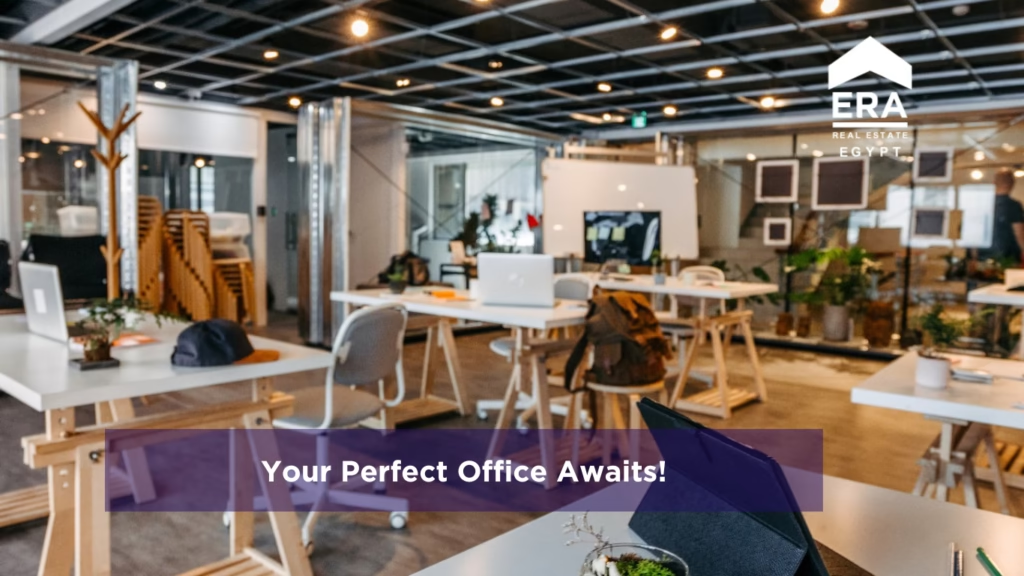The Importance of Ergonomics in Corporate Office Spaces
Introduction
Defining Ergonomics in Corporate Offices Spaces
Ergonomics in corporate offices spaces refers to the multidisciplinary approach focused on designing work environments that optimize human well-being and overall system performance. It involves understanding how to arrange office furniture, tools, and technology to fit the employees’ needs, thereby minimizing discomfort and enhancing productivity. Imagine sitting at a desk that feels customized just for you—a chair that supports your back, a desk that’s adjustable, and a computer screen that sits at eye level. This is the essence of ergonomics.
Benefits of Implementing Ergonomics
Investing in ergonomics is not merely an idealistic endeavor; it’s a practical strategy that brings numerous benefits:
- Improved Employee Health: Reducing the risk of injuries, particularly musculoskeletal disorders.
- Enhanced Productivity: When comfort is prioritized, employees find it easier to focus and complete tasks efficiently.
- Cost Savings: Fewer workplace injuries lead to decreased absenteeism and lower healthcare costs.
For example, a company that redesigned its workspace to be more ergonomic reported a 25% increase in employee output over three months. These thoughtful adjustments not only uplift the workplace spirit but also foster a culture of care and efficiency.
The Impact of Ergonomics on Employee Health and Productivity
Reduction of Musculoskeletal Disorders
One of the most significant impacts of ergonomics in the workplace is the reduction of musculoskeletal disorders (MSDs). These are injuries or pain in the muscles, nerves, tendons, joints, and other supporting structures that can occur from repetitive movements or poor posture. By implementing ergonomic solutions, companies can create a more supportive environment for their employees.
- Adjustable furniture: Providing chairs and desks that can be adjusted to fit individual body types minimizes strain on the body.
- Proper monitor placement: Placing computer screens at eye level helps reduce neck and back strain.
For example, a friend of mine switched to an ergonomic chair after experiencing persistent back pain. Within weeks, the discomfort subsided, demonstrating the direct benefits of this ergonomic adjustment.
Enhancement of Task Efficiency
When employees are comfortable, their productivity levels soar. Ergonomics not only helps alleviate physical discomfort but also enhances task efficiency. A well-designed workspace allows for smoother workflows and less time wasted managing discomfort or improper tools.
- Decluttered workspaces: Organizing tools and materials for easy access enables quicker task completion.
- Streamlined processes: When ergonomics are prioritized, repetitive tasks become less exhausting, leading to better focus and creativity.
In essence, investing in ergonomics transforms the workspace into a thriving environment that fosters health, well-being, and productivity, creating a win-win for both employees and employers.
Designing an Ergonomic Office Layout
Choosing the Right Furniture
When it comes to designing an ergonomic office layout, one of the fundamental elements is selecting the right furniture. This isn’t just about style; it’s about functionality and comfort that cater to the individual needs of employees.
- Ergonomic chairs: Look for chairs with adjustable heights, lumbar support, and armrests to accommodate various body types. For instance, at a previous company I worked with, swapping standard chairs for ergonomic models led to visible improvements in employee satisfaction and reduced complaints of discomfort.
- Desks with adjustable heights: These desks enable a choice between sitting and standing, promoting movement and reducing fatigue.
Importance of Proper Lighting and Air Quality
Another crucial aspect of an ergonomic office layout involves optimizing lighting and air quality. Poor lighting can lead to eye strain, headaches, and decreased focus, while subpar air quality can contribute to fatigue and health issues.
- Natural light: Whenever possible, maximize natural light to create a more inviting and energizing workspace.
- Good ventilation: Ensure that air circulation systems are functioning effectively to promote a fresh and healthy environment.
Small changes in these areas can have a substantial impact on employee wellness and productivity, creating a workspace conducive to creativity and efficiency.
Employee Education and Training in Ergonomics
Raising Awareness About Ergonomic Practices
Once an ergonomic office layout is established, the next essential step is raising employee awareness about ergonomic practices. It’s not enough to simply provide the tools; employees need to understand how to use them effectively.
- Workshops and Seminars: Hosting regular sessions on the benefits of ergonomics can help embed these practices in company culture.
- Informational Materials: Distributing flyers or creating digital content that highlights key ergonomic principles can serve as constant reminders for employees.
For instance, a company I consulted for implemented a “Ergonomics Month” campaign, where employees were encouraged to share their tips and experiences. This not only fostered camaraderie but also reinforced the importance of maintaining a healthy work environment.
Training Employees on Proper Posture and Desk Setup
Equally important is training employees on proper posture and desk setup.
- Individual Assessments: Conducting personalized ergonomic assessments can ensure that each employee’s workspace is optimized for their specific needs.
- Posture Workshops: Offering workshops to demonstrate correct sitting and standing postures will empower employees to make adjustments that prevent strain.
By investing in employee education and practical training, companies equip their workforce with the knowledge and skills necessary for creating a comfortable and productive work environment.
Implementing Ergonomic Technology Solutions
Benefits of Standing Desks and Monitor Arms
In the ever-evolving landscape of corporate offices, ergonomic technology solutions play a vital role in enhancing employee comfort and efficiency. One popular solution is the standing desk, which allows employees the flexibility to alternate between sitting and standing throughout the day.
- Reduced Sedentary Behavior: Studies show that using a standing desk can help decrease prolonged sitting, which has been linked to various health issues.
- Increased Energy Levels: Employees often report feeling more energetic and productive when they have the option to stand while working.
Additionally, integrating monitor arms into the office workspace can elevate the user experience:
- Personalized Height Adjustment: Employees can position their screens at eye level, helping to reduce neck strain and improve overall posture.
Software for Reminders of Breaks and Posture Correction
Technology also brings us software solutions designed to promote better workplace habits.
- Break Reminder Apps: These programs gently remind employees to take regular breaks, allowing them to step away from their desks and avoid fatigue.
- Posture Correction Tools: Some applications provide real-time feedback on posture, prompting adjustments to reduce strain.
A colleague of mine adopted a posture reminder app and found that it significantly improved her back pain over time. The integration of these ergonomic technology solutions can ultimately foster a healthier and more productive workforce, benefitting both the employees and the organization.
Financial Benefits of Investing in Ergonomics
Cost Reduction Due to Decreased Absenteeism
Investing in ergonomics is not just about enhancing employee comfort; it directly influences the bottom line. One of the most significant financial benefits is the reduction in absenteeism. When employees are less prone to injuries and discomfort, they are likely to take fewer sick days.
- Lower Workers’ Compensation Costs: Fewer injuries mean reduced claims and premiums associated with workplace injuries.
- Increased Productivity: Employees who remain healthy and active contribute more effectively, leading to higher outputs.
For example, a company that revamped its ergonomic designs observed a 30% decrease in reported absenteeism over a year, showcasing tangible financial rewards from their investments.
Improving Overall Employee Satisfaction and Retention
When employees feel valued through ergonomic investments, their job satisfaction significantly rises. Higher levels of satisfaction can lead to greater employee retention, saving companies substantial costs associated with turnover.
- Decreased Recruitment Costs: Retaining employees over time reduces the financial burden associated with recruiting and training new hires.
- Enhanced Team Morale: With improved job satisfaction, employees are more likely to advocate for the company, creating a positive workplace culture.
A friend in HR noted that their focus on ergonomic improvements resulted in a marked increase in employee loyalty, ultimately benefiting the organization both financially and culturally. Investing in ergonomics creates a win-win scenario, fostering a healthier, happier, and more engaged workforce.
Case Studies and Success Stories in Ergonomic Office Design
Real-Life Examples of Companies Benefitting from Ergonomics
Numerous companies have experienced transformative results by prioritizing ergonomic office design. For instance, a tech firm known for its innovative approach revamped its workspace by incorporating ergonomic chairs, standing desks, and collaborative workspaces.
- Results: This project led to a reported 25% increase in employee productivity and a 40% decrease in reported discomfort-related issues.
Similarly, a well-known financial institution invested in ergonomic assessments for individual workstations. Employees received personalized recommendations, resulting in enhanced satisfaction and engagement.
- Impact: The firm noted a significant decline in absenteeism and improved performance metrics.
Lessons Learned and Key Takeaways
From these case studies, several key takeaways emerge.
- Empowerment Through Ergonomics: Employees who feel comfortable and supported are more productive and engaged.
- Personalization is Key: Tailoring ergonomic solutions to the individual needs of employees is essential for achieving the best results.
A friend shared a story about her previous employer, which implemented ergonomic improvements but neglected to consider individual assessments. While there were some benefits, the strongest outcomes came when employees were actively involved in the process. Prioritizing ergonomic solutions creates a significant ripple effect of benefits across workplace culture and productivity.
Conclusion
Recap of the Importance of Ergonomics in Corporate Office Spaces
As we’ve explored throughout this discussion, the significance of ergonomics in corporate office spaces is undeniable. By prioritizing ergonomic design, companies can create work environments that promote employee health, enhance productivity, and reduce costs associated with absenteeism and turnover.
- Critical Elements: From selecting the right furniture to implementing ergonomic technology solutions, each aspect contributes to a holistic approach.
- Employee Well-being: Investing in ergonomics not only benefits the individual worker but also cultivates a collaborative and harmonious workplace culture.
Looking Towards a Healthier and More Productive Future
In a world where workplace dynamics continue to evolve, the focus on ergonomics is more relevant than ever. Companies that embrace these principles position themselves not just as leaders in their industries, but as champions for employee health and happiness.
Reflecting on personal experiences, when previous employers committed to ergonomic practices, noticeable shifts in morale and productivity occurred.
- Long-term Impact: The commitment to a supportive work environment fosters a culture of engagement and retention, paving the way for sustainable success.
Looking ahead, businesses that prioritize ergonomics will be better equipped to attract and retain top talent, ensuring a thriving, healthy, and productive future for all.



